How to Attract and Identify a House Wren
Updated: May 19, 2022
The house wren is a plain looking songbird, but its bubbling songs and nonstop activity make this cavity nester a pleasure to observe.
What Does a House Wren Look Like?
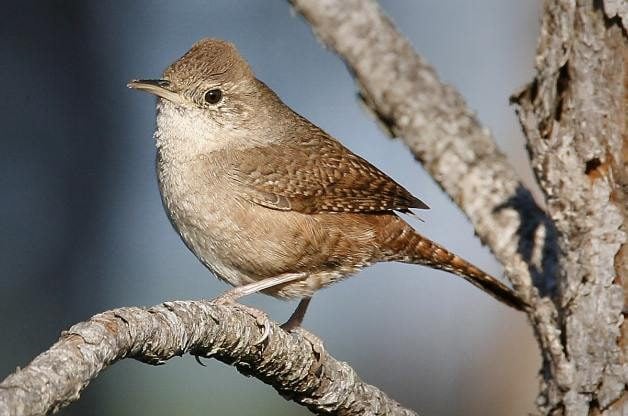
People often describe the house wren as plain because the bird has simple brown colors. But don’t disregard these backyard guests. House wrens measure 4 3/4 inches long with a wingspan of 6 inches. Look for a bird with a brown body and narrow dark bars or stripes on its wings and tail.
Learn how to identify and attract a Carolina wren and a Bewick’s wren. Plus, learn the differences between a house wren and a Carolina wren, and between wrens and sparrows.
House Wren Song
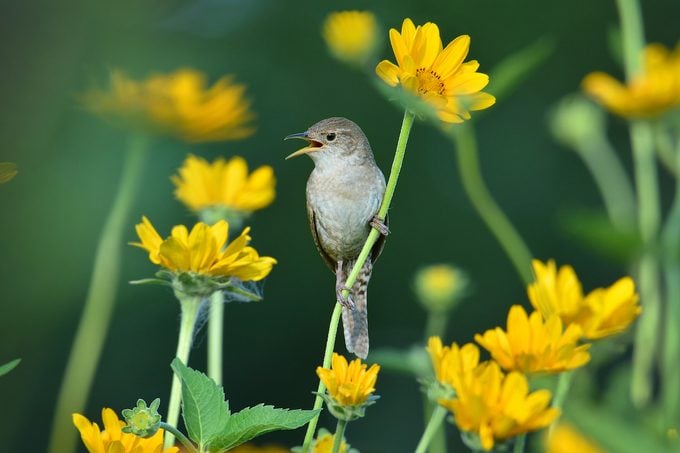
An unstoppable waterfall of notes spills from the throat of the tiny, indefatigable house wren, one of our most beloved backyard birds. What house wrens lack in appearance they make up for with their songs. In fact, it’s not uncommon for male house wrens to sing nine to 11 times per minute during breeding season. The male’s singing is mostly a territorial claim. Wrens often nest close to people, so you’re likely to hear them this spring. Listen for their boisterous melodies during the summer season. Their rapid rolling trill rises and then descends into a bubbling song.
The house wren is the virtuoso, but all wrens have voices that will perk your ears up.
Listen to the house wren’s song.
Bird songs provided by the Cornell Lab of Ornithology.
Enjoy 16 delightful pictures of wren birds.
Nests and Eggs
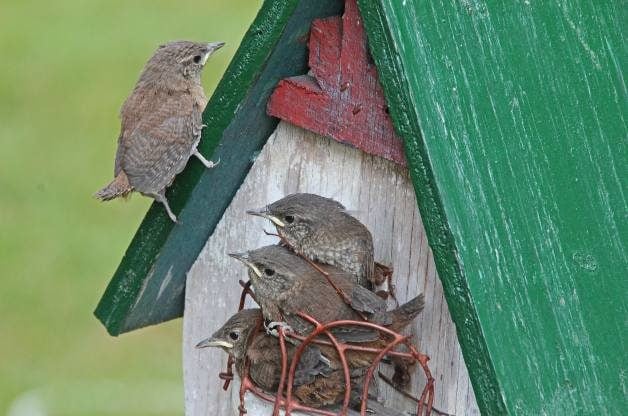
Even though house wrens don’t stop at feeders, they are still a common backyard bird because they’re cavity nesters. They use natural cavities but they also like manmade nest boxes. Create a brush pile and grow plenty of trees and shrubs for them to use for nesting. If you put up a birdhouse with a 1-1/8-inch entrance, you have a good chance of welcoming a house wren family. Chickadees and wrens nest in the same kind of birdhouse. If it says, “wren house,” it will work for both species.
The male is serious about nest-building in spring, because it’s what helps him attract a mate. He starts constructing a few nests at once. His female partner chooses the most promising one, finishes it and mates with the owner.
Head southwest to see a cactus wren.
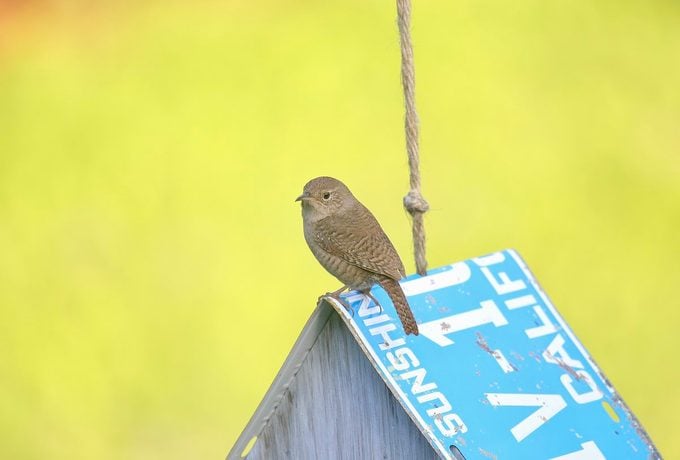
Six or seven speckled-white eggs are laid in a nest of twigs hidden in a tree cavity or birdhouse. House wrens may lay as many as 10 eggs in one brood. On occasion, the eggs may hatch in only nine days, but 12 is more typical. You’ll know the moment because the babies begin cheeping.
Get more tips to attract nesting Carolina and house wrens.
What Do House Wrens Eat?

Since they mostly eat insects, you won’t see them at feeders much, but they will stop by sometimes for seed and suet. Learn more about how to attract wrens to your yard.
Range Map and Habitat
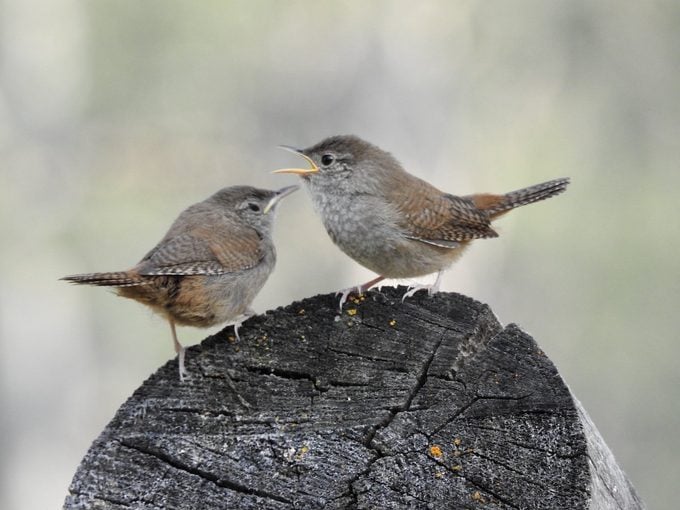
This species is the most common wren in North America, present throughout most of the continent during summer. Look for these wrens foraging for insects in low tree branches, shrubs and brush piles in backyards, parks and open woods. The more places there are for insects to hide, the better the habitat is for house wrens.
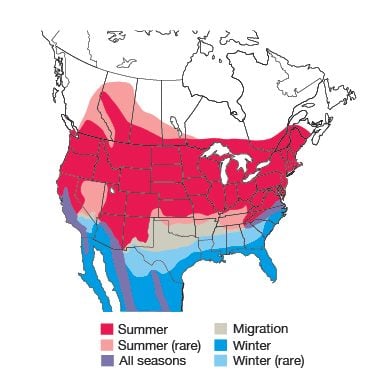
Range maps provided by Kaufman Field Guides, the official field guide of Birds & Blooms.
